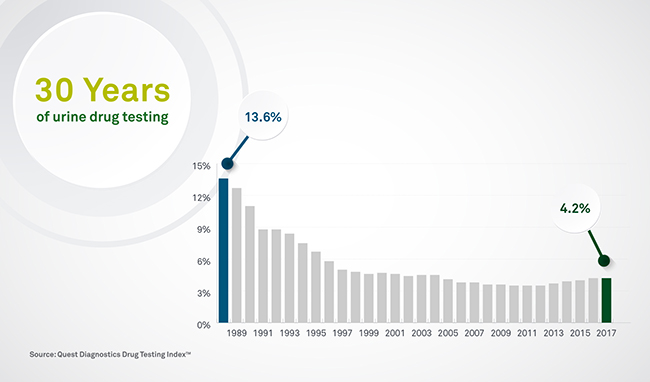 We kicked off our three-part webinar series, Back to basics, focusing on urine drug testing. Our experts, Charlie Sullivan, director of collection services, and Mark Haworth, certifying scientist, discussed best practices for collections and laboratory processes that help to ensure an accurate urine drug test.
We kicked off our three-part webinar series, Back to basics, focusing on urine drug testing. Our experts, Charlie Sullivan, director of collection services, and Mark Haworth, certifying scientist, discussed best practices for collections and laboratory processes that help to ensure an accurate urine drug test.
Six takeaways from our webinar:
Watch a recording of this webinar or other webinars presented by Quest Diagnostics.
Most common drug test
Urine drug testing is the most commonly used drug test specimen type because of its proven methodology and broad range of drug panels. It is the only specimen type used for regulated drug testing programs.
Urine drug test detection times
Urine drug tests detect drug use in the previous 24 to 72 hours. Drug detection in urine testing can vary depending on the drug, the amount ingested, and the donor’s metabolism.
Why drug test
Urine testing can be used for nearly every drug testing reason which includes pre-employment, random, periodic, return-to-duty, reasonable suspicion, and post-accident.
Discover 10 reasons to implement a workplace drug testing program here.
Cheating a drug test
Adulterating, substituting, and diluting a specimen are common ways that donors try to cheat a urine drug test. Specimen validity testing can help ensure the integrity of a urine test by measuring pH, creatinine, and specific gravity (when indicated) and identifying if these results are consistent with human urine. Common adulterants include items such as bleach, iodine, ammonia, nitrites, and chromates.
Discover 3 ways cheaters cheat drug tests here.
Drug test failure rate
Overall positivity in urine drug testing for the combined U.S. workforce has declined during the past 30 years which illustrates the effectiveness of drug testing to deter substance abuse among employers who drug test their applicants and employees. That said, overall positivity hit a 12-year high in 2017, according to the Quest Diagnostics Drug Testing Index (DTI). This jump indicates that employers should remain vigilant with their testing programs.
Urine drug test for marijuana
Marijuana positivity continued its five-year upward trajectory in urine testing. The latest DTI data showed that marijuana positivity increased 4% in the general U.S. workforce (2.5% in 2016 versus 2.6% in 2017) and nearly 8% in the safety-sensitive workforce (0.78% versus 0.84%).
In conclusion, urine testing, like all drug testing
methodologies, helps to screen applicants and employees who use drugs. It is referred
to as the “gold
standard” of workplace drug testing for its capacity to test for a
wide range of illicit and prescription drugs.
Download our drug
testing guide.
To learn more about urine drug testing, visit our website.
 Your Privacy Choices
|
Privacy Notices
|
Terms
|
Language Assistance / Non-Discrimination Notice | Asistencia de Idiomas / Aviso de no Discriminación | 語言協助 / 不䈚視通知
Your Privacy Choices
|
Privacy Notices
|
Terms
|
Language Assistance / Non-Discrimination Notice | Asistencia de Idiomas / Aviso de no Discriminación | 語言協助 / 不䈚視通知
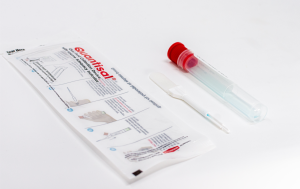
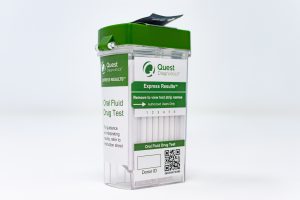

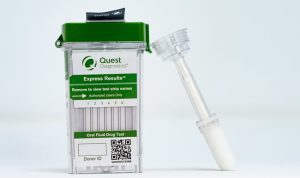


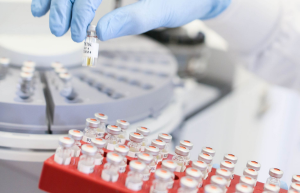
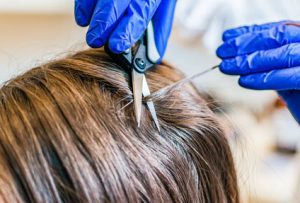
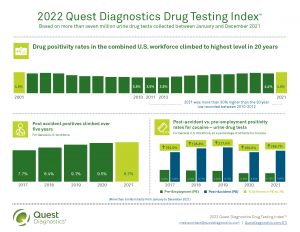










Six takeaways from our webinar:
Watch a recording of this webinar or other webinars presented by Quest Diagnostics.
Most common drug test
Urine drug testing is the most commonly used drug test specimen type because of its proven methodology and broad range of drug panels. It is the only specimen type used for regulated drug testing programs.
Urine drug test detection times
Urine drug tests detect drug use in the previous 24 to 72 hours. Drug detection in urine testing can vary depending on the drug, the amount ingested, and the donor’s metabolism.
Why drug test
Urine testing can be used for nearly every drug testing reason which includes pre-employment, random, periodic, return-to-duty, reasonable suspicion, and post-accident.
Discover 10 reasons to implement a workplace drug testing program here.
Cheating a drug test
Adulterating, substituting, and diluting a specimen are common ways that donors try to cheat a urine drug test. Specimen validity testing can help ensure the integrity of a urine test by measuring pH, creatinine, and specific gravity (when indicated) and identifying if these results are consistent with human urine. Common adulterants include items such as bleach, iodine, ammonia, nitrites, and chromates.
Discover 3 ways cheaters cheat drug tests here.
Drug test failure rate
Overall positivity in urine drug testing for the combined U.S. workforce has declined during the past 30 years which illustrates the effectiveness of drug testing to deter substance abuse among employers who drug test their applicants and employees. That said, overall positivity hit a 12-year high in 2017, according to the Quest Diagnostics Drug Testing Index (DTI). This jump indicates that employers should remain vigilant with their testing programs.
Urine drug test for marijuana
Marijuana positivity continued its five-year upward trajectory in urine testing. The latest DTI data showed that marijuana positivity increased 4% in the general U.S. workforce (2.5% in 2016 versus 2.6% in 2017) and nearly 8% in the safety-sensitive workforce (0.78% versus 0.84%).
In conclusion, urine testing, like all drug testing methodologies, helps to screen applicants and employees who use drugs. It is referred to as the “gold standard” of workplace drug testing for its capacity to test for a wide range of illicit and prescription drugs.
Download our drug testing guide.
To learn more about urine drug testing, visit our website.